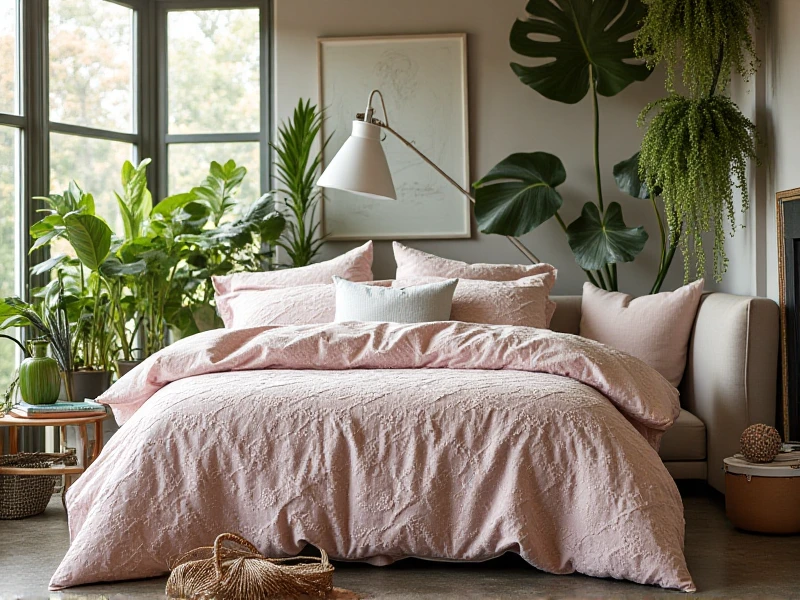The World of Textiles: From Ancient Fibers to Modern Innovations
2025-06-03

Title:
From the clothes we wear to the furnishings in our homes, textiles are an intrinsic and vital part of human civilization. Their story spans millennia, weaving together innovation, artistry, culture, and technology. Today, the global textiles industry continues to evolve, embracing sustainability and groundbreaking materials to meet the demands of a changing world.
A Tapestry of History
The history of textiles is almost as old as humanity itself. Archaeological evidence points to flax cultivation for linen production in ancient Egypt and Mesopotamia over 8,000 years ago. Silk weaving flourished in ancient China, becoming a treasured commodity along the Silk Road. Wool became central to European economies. Cotton, cultivated for centuries across the Americas, Africa, and Asia, revolutionized global trade and industry. The Industrial Revolution introduced mechanical spinning and weaving, dramatically accelerating production. This deep heritage underscores how textiles have always been fundamental to economies and societies.
Exploring Major Textile Fibers
The foundation lies in the fiber. Textiles are primarily categorized by fiber origin:
1. Natural Fibers:
Plant-based (Cellulosic): Cotton (prized for breathability and comfort), Linen (from flax, known for its coolness and strength), Jute (strong, used for sacks and ropes), Hemp (durable and increasingly popular for sustainable applications).
Animal-based (Protein): Wool (from sheep, offering warmth and resilience), Silk (from silkworms, renowned for its luxurious sheen and drape), Cashmere (downy fiber from goats, exceptionally soft), Mohair (from Angora goats, lustrous).
2. Manufactured Fibers:
Regenerated Cellulosics: Rayon/Viscose, Lyocell (Tencel™), Modal. Derived from wood pulp, offering silk-like properties or properties similar to cotton/linen, often with a focus on sustainability (especially Lyocell).
Synthetics: Polyester (versatile, strong, wrinkle-resistant), Nylon (strong, elastic, good for hosiery and technical fabrics), Acrylic (wool-like characteristics), Spandex (Lycra™, provides exceptional stretch). Synthetics dominate due to versatility and cost-effectiveness.
Mineral: Glass fiber, Asbestos (largely obsolete), used primarily for industrial textiles.
The Rise of Sustainability in Textiles
Environmental and ethical concerns are significantly reshaping the textiles sector. Key focus areas include:
Organic Production: Using methods that avoid synthetic pesticides and fertilizers, especially for cotton.
Recycled Materials: Creating polyester from plastic bottles (rPET) or regenerating wool and cotton fibers reduces reliance on virgin resources and diverts waste.
Regenerative Agriculture: Building soil health and biodiversity while growing fiber crops.
Eco-Friendly Processing: Reducing water usage, minimizing chemical dyes/finishes, adopting closed-loop systems where chemicals and water are recycled (as with Lyocell).
Certifications: Labels like GOTS (Global Organic Textile Standard), Oeko-Tex Standard 100, and Bluesign® provide transparency and assurance to consumers.
Slow Fashion: Encouraging more durable, timeless garments over disposable, trend-driven items to combat waste.
Factors Influencing Modern Textile Choices
Consumers and manufacturers consider numerous attributes:
Performance: Durability, strength, abrasion resistance, elasticity, pilling resistance.
Comfort: Breathability, moisture-wicking, softness, texture, drape.
Functionality: Wrinkle resistance, stain resistance, water repellency, flame retardancy.
Maintenance: Ease of washing, drying tolerance, shrinkage resistance.
Appearance: Luster, color fastness.
Environmental and Ethical Impact: Sourcing, production methods, lifecycle footprint.
The Global Textile Industry
The textiles industry remains a colossal global engine. Key stages include:
1. Fiber Production: Cultivation (cotton, wool, flax) or chemical production (synthetics).
2. Yarn Spinning: Turning fibers into continuous thread.
3. Fabric Formation:
Weaving: Interlacing warp and weft yarns on a loom to create cloth.
Knitting: Interlooping yarns to form a flexible fabric.
Non-wovens: Bonding fibers mechanically, chemically, or thermally (e.g., felt, geotextiles, medical fabrics).
4. Finishing: Treating fabrics to improve aesthetics, functionality, or performance (dyeing, printing, coating, calendaring, softening).
5. Cut-Make-Trim (CMT): Manufacturing the final textile product.
Manufacturing hubs are spread worldwide, with China, India, the EU, the USA, Bangladesh, Vietnam, Pakistan, and Turkey playing major roles.
Trends and Future Innovations
The textile industry is constantly innovating:
Technical Textiles: Engineered for specific purposes (e.g., automotive parts, medical implants, geotextiles for construction, protective clothing, sportswear).
Smart Textiles: Fabrics integrated with electronics that sense, respond, and even communicate (e.g., temperature regulation, health monitoring, interactive surfaces).
Biobased Polymers: Developing synthetic fibers from renewable biological sources (like bio-nylon).
Advanced Recycling Technologies: Moving beyond mechanical recycling towards chemical recycling to break down old textiles into high-quality virgin-like fibers.
Biomimicry: Designing materials inspired by nature (e.g., self-cleaning surfaces like lotus leaves).
Digitalization: AI for design, optimized manufacturing, supply chain transparency, and personalized customer experiences.
Making Informed Choices
The next time you select clothing, bedding, or upholstery, pause to consider the journey of the textiles involved. Look beyond aesthetics and performance:
Check Fiber Content: Understand what the item is made of.
Seek Transparency: Opt for brands that disclose supply chain and manufacturing practices.
Support Sustainability: Choose certified organic cotton, recycled fibers, or textiles from brands committed to ethical practices and circularity whenever feasible.
Prioritize Longevity: Buy well-made items designed to last, reducing overall consumption.
In Conclusion
Textiles represent an intersection of history, science, artistry, and essential human need. From humble natural origins to cutting-edge synthetic marvels, they clothe us, comfort us, protect us, and define our spaces. As the industry confronts environmental and ethical challenges, technological advancements and a growing emphasis on sustainability pave the way for a more responsible and innovative future. Understanding the complexities and choices within the world of textiles empowers us to be more conscious consumers and appreciate this fundamental yet constantly evolving aspect of our lives. Explore the incredible array and possibilities modern textiles offer.
Category: